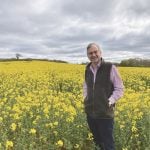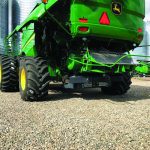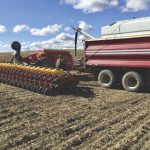
Get more shots on goal with AI
The Global Institute for Food Security in Saskatoon is planning to lead the world into a future where computers can re-design and improve natural compounds and where science will make bigger strides than ever before

The slow evolution toward real-time variable rate fertilizer
Variable rate fertilizer to apply the best rate for each acre has merit, but the cost and the hassle to make it work does not appeal to many farmers. The return does not seem to justify the work required. Can we change that with a real-time on-the-go system?

Down the road from Jeremy Clarkson
They’re each calledJeremy and each is a unique U.K. farmer of a kind you may never find in Canada. On top of that, our Jay Whetter is a fan of both. But which is the one we should be watching?

AI for data analysis
[AI for the Farm] Farms are building giant heaps of data. Somewhere in them is something valuable, call it a star of hope. But how do you pick out the useful stuff? It looks like artificial intelligence will help

How optical sprayers do a whole lot more
[Better Advice] Optical spraying systems can pay off if used only for pre-seed burnoffs, but with a little pushing of boundaries, these farmers are finding they can also use the technology to target fungicides and pre-harvest desiccants

Are the reservoir dog days ending?
If the new canola processors announced for Regina become fully functioning facilities, they could process an additional 4.5 million tonnes of canola per year. Could Lake Diefenbaker water help?

The satisfying pulverization of weed seeds
Weed seed destroyers mounted on combines provide a different approach — in timing and technique — to power up an integrated weed-management program

Don’t be a silly one, scout for verticillium

260,000 canola seeds per acre, placed precisely
With the precision placement of a planter, Edmund Rath achieves 88 to 93 per cent canola seed emergence, a big improvement from the typical 50 to 60 per cent with his air seeder

Four canola seed considerations for 2022
The best cultivar is usually the one with a risk-and-reward combination that suits the situation in each farm and field

